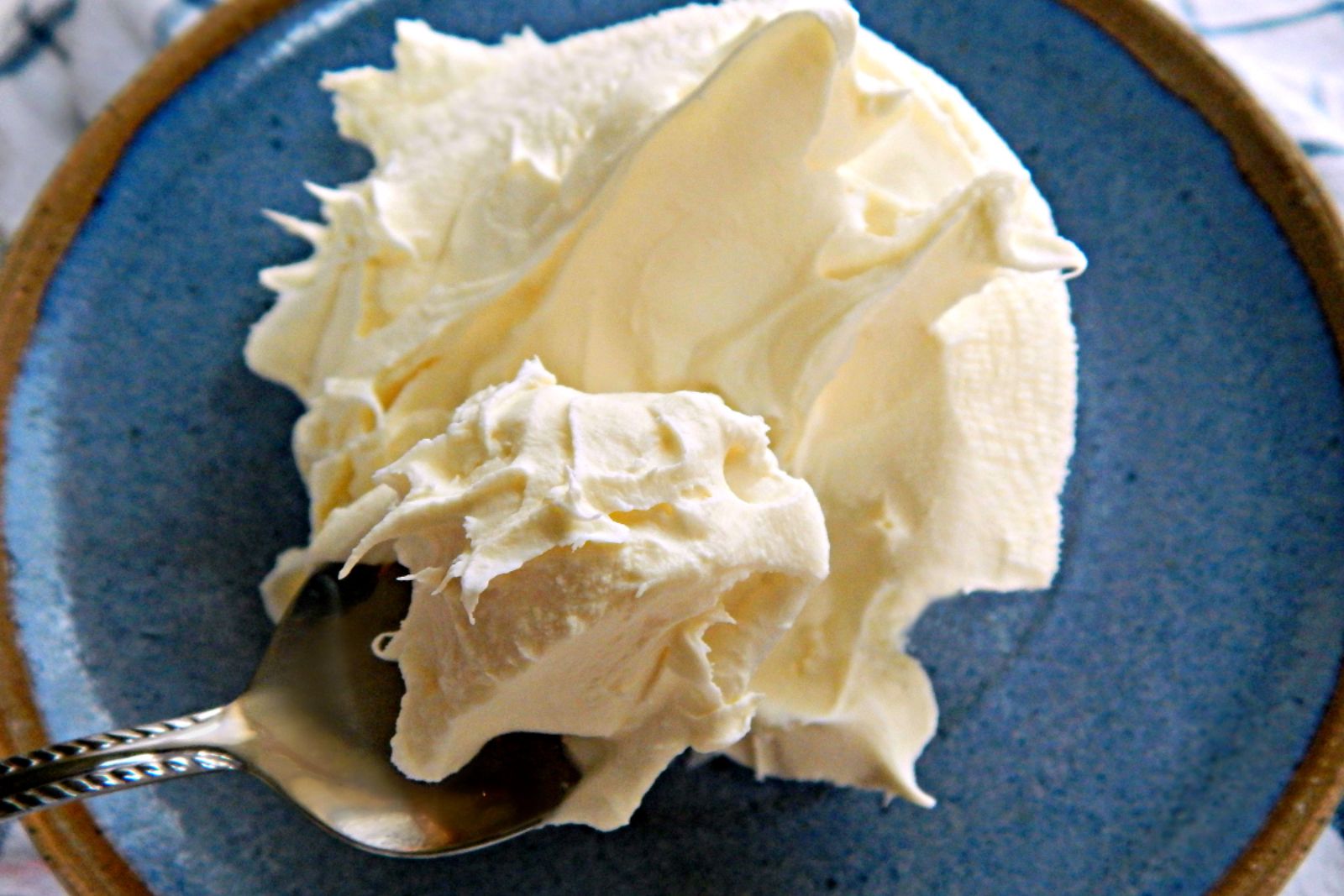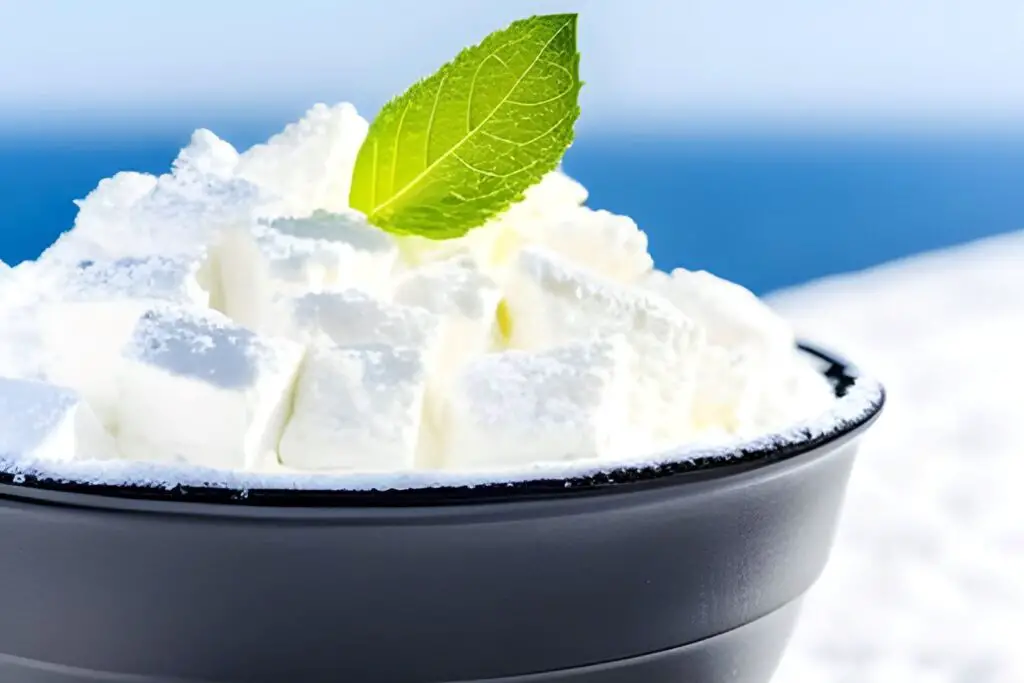
Mascarpone cheese is a luxurious and creamy Italian cheese known for its velvety texture and mild, slightly sweet flavor. It is a versatile ingredient used in both sweet and savory dishes, from decadent desserts like tiramisu to creamy pasta sauces. While mascarpone cheese is best enjoyed fresh, there are times when you might have excess or want to stock up during a sale. Freezing mascarpone cheese is a convenient way to extend its shelf life without compromising its quality. By following these simple steps, you can ensure that your mascarpone cheese stays perfect for later use.
Here’s a comprehensive guide on freezing mascarpone cheese properly:
Step 1: Choose fresh mascarpone cheese
Selecting fresh mascarpone cheese is crucial when preparing it for freezing. High-quality mascarpone cheese ensures that you’ll have a better end product after thawing. Here’s why each step is important:
- High-quality and Freshness: Choosing fresh mascarpone cheese guarantees that the cheese hasn’t started to deteriorate in quality or flavor. Fresh mascarpone cheese has a smooth, creamy texture and a mild, slightly sweet taste. If the cheese is already past its prime, it might have an altered taste, grainy texture, or even signs of spoilage, which can negatively impact the overall result.
- Check the Expiration Date: Always check the expiration date on the container of mascarpone cheese before buying or using it. Freezing mascarpone cheese before its expiration date ensures that you capture its best flavor and texture before any decline occurs. If the cheese is already close to or past its expiration date, it’s best to use it immediately rather than freezing it.
- Well-sealed Container: Opt for mascarpone cheese that is packaged in a well-sealed container. A proper seal prevents air from entering the package, which can lead to freezer burn and the loss of texture and flavor in the cheese. Additionally, a tightly sealed container keeps unwanted odors and flavors from affecting the mascarpone during freezing.
- No Signs of Spoilage: Carefully inspect the mascarpone cheese for any signs of spoilage, such as mold growth, off smells, or visible discoloration. If the cheese shows any signs of being spoiled, do not freeze it, as freezing will not improve its quality. Always aim to freeze fresh and healthy mascarpone cheese.
Is it possible to freeze an unopened container of mascarpone cheese that is nearing its expiration date to extend its shelf life?
While it is possible to freeze unopened mascarpone cheese nearing its expiration date, it’s essential to consider the quality of the cheese before freezing. If the cheese is still fresh and not showing any signs of spoilage, freezing can extend its shelf life. However, it’s generally best to use the cheese before its expiration date for optimal quality.
Step 2: Portion the cheese (optional)
Portioning the mascarpone cheese before freezing is an optional but beneficial step, especially if you have a large container and don’t anticipate using all of it at once. Here’s why this step can be advantageous:
- Control Over Usage: Mascarpone cheese is a rich and indulgent ingredient commonly used in small amounts in various recipes. By portioning the cheese into smaller amounts, you have better control over how much you thaw and use at a time. This way, you can avoid defrosting the entire container when you only need a small portion, preventing unnecessary waste.
- Reduce Waste: Mascarpone cheese is a perishable dairy product, and once it’s thawed, it should be used within a few days for the best quality. If you freeze the entire container and can’t use it all before it spoils, you risk wasting a significant amount of the cheese. Portioning allows you to thaw only what you need, minimizing waste and maximizing the cheese’s usage.
- Preserve Quality: Each time you freeze and thaw a dairy product like mascarpone cheese, there is a chance of its texture and flavor being slightly affected. By portioning the cheese into smaller amounts, you reduce the number of freeze-thaw cycles the entire batch goes through. This helps maintain the cheese’s original quality and prevents it from deteriorating due to repeated freezing and thawing.
- Convenient Measurements: When you divide the mascarpone cheese into smaller portions, you create pre-measured quantities that can be more convenient for recipes. It saves time and effort in measuring out the needed amount, especially when cooking or baking.
However, it’s important to note that portioning is optional, and if you know you’ll be using the entire container in one go or if you have a smaller container that doesn’t require portioning, you can skip this step. Whether you choose to portion or not, the key is to follow proper freezing and thawing procedures to ensure the best possible quality and taste of the mascarpone cheese when you use it in your dishes.
Step 3: Prepare for freezing
Preparing the mascarpone cheese for freezing involves ensuring it is in its freshest state and hasn’t been left at room temperature for too long. This step is essential to maintain the quality and safety of the cheese during freezing. Here’s why it’s crucial:
- Freshness Matters: Freezing preserves the quality of the mascarpone cheese at the point of freezing. If the cheese is already past its peak freshness when frozen, it will not improve in quality during storage. Freezing cannot reverse any degradation that may have occurred due to age or improper storage before freezing. Starting with fresh mascarpone cheese ensures the best possible result after thawing.
- Avoiding Room Temperature Storage: Mascarpone cheese, like other dairy products, is susceptible to bacterial growth and spoilage when left at room temperature for an extended period. Bacteria can multiply rapidly in a warm environment, potentially leading to foodborne illnesses and negatively affecting the cheese’s flavor and texture. Always refrigerate mascarpone cheese promptly and avoid leaving it out for extended periods before freezing.
- Using Up Near Expiration Date: If your mascarpone cheese is nearing its expiration date, it’s best to use it up before freezing. Freezing the cheese won’t extend its shelf life beyond the expiration date. Instead, it’s more practical to incorporate it into recipes and enjoy its rich flavor and creamy texture before it reaches its limit.
Step 4: Package the mascarpone cheese
Packaging the mascarpone cheese properly is essential to protect it during freezing and preserve its creamy texture and flavor. Here’s why this step is crucial:
- Airtight Containers or Freezer-safe Bags: Airtight containers and freezer-safe resealable bags create a barrier that prevents air from coming into contact with the cheese. Exposure to air can lead to freezer burn, which causes dehydration and can negatively affect the taste and texture of the mascarpone cheese. Airtight packaging helps maintain the cheese’s original quality and prevents it from absorbing any unwanted odors from the freezer.
- Preventing Freezer Burn: Freezer burn occurs when moisture in the cheese evaporates and then re-condenses on the surface, forming ice crystals. These ice crystals can damage the cheese’s structure, resulting in a grainy texture and altered taste. By removing as much air as possible from the packaging, you minimize the chance of freezer burn, ensuring that the mascarpone cheese stays creamy and enjoyable after thawing.
- Maintaining Creamy Texture: Mascarpone cheese is prized for its velvety, creamy texture. Proper packaging helps retain this texture during freezing. Without adequate protection, the cheese may become crumbly or separate after thawing, compromising its smoothness and consistency.
- Flattening Resealable Bags: If using freezer-safe resealable bags, flattening them before freezing serves two purposes. First, it creates a more compact package, making efficient use of freezer space. Second, it allows for faster and more even freezing, reducing the risk of large ice crystals forming within the cheese.
Step 5: Label the packages
Labeling the packages of frozen mascarpone cheese is a simple but crucial step to help you keep track of its storage time and maintain its optimal quality. Here’s why this step is important:
- Tracking Storage Time: Mascarpone cheese, like all frozen foods, has a limited shelf life in the freezer. By labeling the containers or bags with the date of freezing, you can easily track how long the cheese has been in the freezer. This information allows you to know when it’s time to use the cheese to ensure it’s at its best quality.
- Rotating Stock: If you freeze mascarpone cheese in portions or batches, labeling each package helps you maintain a first-in, first-out approach to using them. By knowing the freezing date of each package, you can prioritize using the oldest cheese first, preventing any packages from being forgotten and left in the freezer for too long.
- Ensuring Freshness: Mascarpone cheese is best when consumed within the first three months of freezing. Beyond that time, the quality may start to decline, and the cheese might lose some of its creamy texture and flavor. With clear labels indicating the freezing date, you can make sure to use the cheese before it exceeds its optimal storage period.
- Reducing Food Waste: Keeping track of freezing dates and rotating stock helps reduce food waste. It allows you to plan your meals and recipes accordingly, using the frozen mascarpone cheese before it reaches the end of its recommended freezer storage period.
- Quick Identification: Clear labeling makes it easier to identify the contents of each package without the need to open them, saving time and ensuring you reach for the right amount of cheese for your cooking needs.
Step 6: Freeze the mascarpone cheese
Freezing the mascarpone cheese properly is crucial to preserving its quality and preventing any potential contamination. Here’s why this step is essential:
- Maintaining Quality: Placing the well-sealed containers or bags of mascarpone cheese in the coldest part of the freezer ensures that the cheese freezes rapidly and evenly. Rapid freezing helps preserve the cheese’s creamy texture and delicate flavor, minimizing any damage to its structure during the freezing process.
- Preventing Contamination: Mascarpone cheese, like many dairy products, can easily absorb odors from other foods in the freezer. To prevent the cheese from taking on unwanted flavors, it’s best to store it away from strong-smelling foods. By keeping it in a separate section of the freezer or placing it in an airtight container, you reduce the risk of cross-contamination.
- Temperature Control: Maintaining a freezer temperature consistently below 0°F (-18°C) is essential for the long-term storage of frozen foods, including mascarpone cheese. At this low temperature, bacterial growth is effectively halted, preventing spoilage and foodborne illnesses. A properly set freezer temperature also prevents the formation of large ice crystals, which can damage the texture of the cheese.
- Avoiding Temperature Fluctuations: Frequent temperature fluctuations can lead to thawing and refreezing, causing damage to the cheese and affecting its quality. Ensure that your freezer’s temperature remains stable to provide the best environment for preserving the mascarpone cheese.
How long can I store frozen mascarpone cheese?
Frozen mascarpone cheese can be stored in the freezer for up to three months for the best quality. Beyond this period, the cheese may still be safe to eat, but its texture and flavor may begin to decline. It’s essential to label and date the packages to keep track of its freshness and rotation.
Step 7: Thaw and use frozen mascarpone cheese
Thawing frozen mascarpone cheese properly is essential to maintain its creamy texture and prevent any undesirable changes that could occur during the thawing process. Here’s why this step is crucial:
- Preserve Creaminess: Slowly thawing the mascarpone cheese in the refrigerator allows it to gradually reach a safe temperature without experiencing rapid temperature changes. This slow process helps maintain the cheese’s creamy texture, preventing it from becoming grainy or separating.
- Prevent Separation: Mascarpone cheese is a delicate dairy product with a high fat content. When exposed to rapid temperature changes, the fat molecules in the cheese can separate from the liquid, resulting in a less smooth and less appealing texture. Thawing the cheese slowly in the refrigerator helps prevent this separation.
- Avoid Foodborne Illness: Thawing frozen mascarpone cheese at room temperature can promote bacterial growth and pose a risk of foodborne illness. Refrigerator thawing, on the other hand, keeps the cheese at a safe temperature where bacteria cannot multiply rapidly.
- Maintain Quality: Proper thawing ensures that the mascarpone cheese retains its original flavor and consistency. By avoiding quick thawing methods like the microwave, you preserve the cheese’s luxurious taste, allowing it to be as enjoyable and versatile as it was before freezing.
Here’s the recommended method to thaw frozen mascarpone cheese:
- Take the desired portion of frozen mascarpone cheese from the freezer.
- Place it in an airtight container or on a plate in the refrigerator.
- Let the cheese thaw slowly overnight or for several hours, depending on the portion size and thickness.
- Once fully thawed, give the mascarpone cheese a gentle stir to restore its smoothness and consistency.
Can I use frozen mascarpone cheese directly in recipes without thawing?
While it’s possible to use frozen mascarpone cheese directly in some recipes, the texture and consistency may not be as smooth and creamy as fresh cheese. For dishes that require the cheese’s signature creaminess, it’s best to thaw the mascarpone cheese in the refrigerator before use to preserve its quality.
Other related questions
Can I refreeze mascarpone cheese?
Refreezing mascarpone cheese is generally not recommended. Once thawed, the texture and quality may suffer from the initial freeze-thaw cycle. It’s best to use mascarpone cheese in one go after thawing to preserve its creamy consistency and rich flavor.
How do I know if the mascarpone cheese has gone bad after being frozen?
To determine if frozen mascarpone cheese has gone bad, inspect it for any signs of spoilage, such as mold growth, unusual odors, or off-color appearance. Check the texture for significant changes, like excessive graininess or separation. If the cheese exhibits any of these indications, it is likely spoiled, and consuming it may not be safe.
Are there any alternative uses for frozen mascarpone cheese?
If you find that the texture of thawed mascarpone cheese is not ideal for certain recipes, consider using it in baked goods or cooked dishes where the texture is less crucial. Mascarpone cheese can still add a rich and luxurious flavor to various dishes, even if its texture is slightly altered after freezing.
Can I freeze mascarpone cheese mixed with other ingredients, like sugar or spices, for future use in specific recipes?
It’s not recommended to freeze mascarpone cheese when mixed with other ingredients. Freezing may alter the texture and consistency of the mixture, leading to undesirable results when used in recipes. For best results, freeze only plain mascarpone cheese and add seasonings or other ingredients fresh when preparing the dish.
Can I freeze leftover homemade mascarpone cheese?
Homemade mascarpone cheese can be frozen, but its texture may differ from store-bought versions due to variations in ingredients and preparation methods. Ensure the homemade mascarpone cheese is well-sealed and stored in a freezer-safe container to maintain its quality. Thaw it slowly in the refrigerator and give it a gentle stir after thawing to assess its texture.
Are there any tips for using thawed mascarpone cheese in recipes like tiramisu or cheesecakes?
When using thawed mascarpone cheese in recipes like tiramisu or cheesecakes, consider blending it well with other ingredients to enhance its creaminess. For a smoother texture, you can also pass the thawed cheese through a fine-mesh sieve. Keep in mind that the final texture may vary slightly from fresh mascarpone, but the rich flavor will still shine through in your delicious desserts.
Can I freeze mascarpone cheese-based sauces or spreads, like savory dips?
While you can freeze sauces or spreads that contain mascarpone cheese, be aware that the texture may change after thawing. Mascarpone cheese has a delicate structure, and freezing and reheating can cause some separation or graininess. If possible, freeze the sauce or spread without the mascarpone and add it fresh after reheating to maintain its luxurious creaminess.








